|
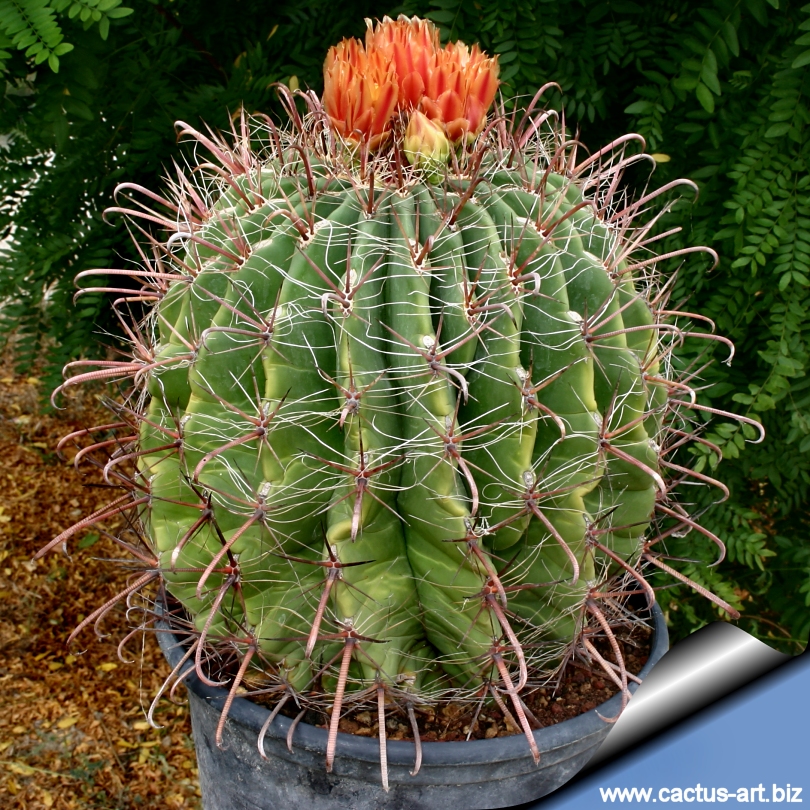
Ferocactus wislizenii
|
|
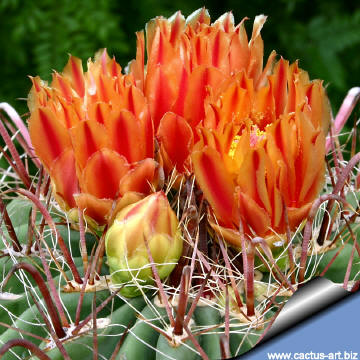 |
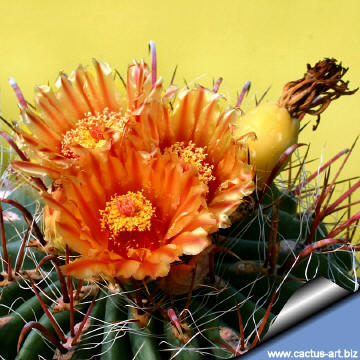 |
|
The 6 cm wide flowers have
numerous narrow tepals and are followed by edible, but sour yellow
fruits. |
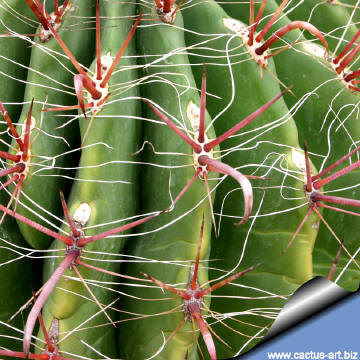 |
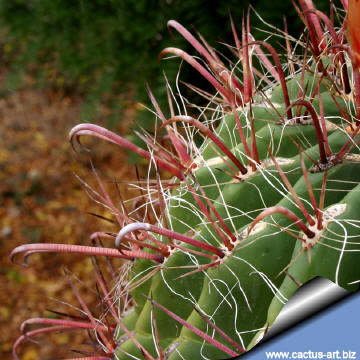 |
|
The beautiful spines that
hook around can graph you if you get too close. Photo of
conspecific taxa, varieties, forms and cultivars
of plants belonging to the
Ferocactus peninsulae/wislizenii
complex
(This
Taxon has various synonyms ( like many other cacti)
whit several controversial varieties and subspecies and comprises a
multitude of different forms, but where each form is linked to others by
populations of plants with intermediate characteristics):
|
|


Advertising
|
|
|
|
Family:
Cactaceae
(Cactus
Family)
Scientific name: Ferocactus wislizenii
(Engelm.) Britt. & Rose
Origin: South-eastern Arizona from Maricopa
and Pima to Greenlee and Cochise counties, east to southern New
Mexico from Hidalgo County to southwestern Lincoln County, and in El
Paso County, Texas. It is also found in Mexico to Sinaloa and Chihuahua.
Habitat: It grows primarily in desert shrub
and grasslands in the Sonoran and Chihuahuan deserts, but also in
shrub-steppe, Chaparral, mountain shrub, pinyon-juniper open forest and
deserts often on gritty, rocky or sandy soils on the hill-sides from 300
to 1,600 m elevation. It gets lots of water in two months and lots of
sun all year. Some species generally associated with barrel cactus
include prickly Opuntia spp., Acacia spp., ocotillo (Fouqueria
splendens), Yucca spp. and saguaro (Carnegiea gigantea).
Common English Names include: Fishhook barrel cactus, Candy
Barrelcactus, Barrel Cactus
Synonyms:
Echinocactus wislizenii Engelmann
Taxonomy note:
F.
tiburonensis (G. E. Lindsay) along whit the
allopatric species
F. herrerae
(J. G. Ortega) are often cited as varieties of
F. wislizeni
by some botanists.
|
|
Description: The
Ferocactus wislizenii is a barrel shaped or columar cactus that
stay usually a single column; rare specimens may be multiple. Life span
has been reported to be from 50 to 130 years.
This barrel-shaped cactus leans to face southward.
Stem: Cylindrical, 45-80 cm in diameter, up to 2 m tall, rare
specimens to 3 (or more) m high.
Ribs: 20-28 sharp ribs, occasionally spiralled. The ribs appears
like accordion pleats on the body of the plant. With abundant moisture
the pleats are less pronounced, but they become deeper as the cactus
uses its reserves of water during drought.
Spines: The spines are dense,
somewhat obscuring the surface of the stem, the number of spines
varies depending on the plant maturity.
Central spines: 3 to 4 (or more) reddish to grey, the larger ones
3.8-5.0 cm long, at least one flattened, larger, curved inward and
hooked, spines will be thinner when grown in shade. The spines have
cross-ridging on their flattened surface
Radial spines: 12 to 20
bristle-like up to 4.5 cm in length.
Root:
The root system of barrel cactus is
shallow and confined to the upper soil layers. Usually a
main anchoring root extended down to about 20 cm and had several short
laterals. Horizontal roots originated from the root crown are very
shallow. Depth of burial decreased with distance from the plant and
ranged from 1.5 to 3.0 cm.
Flowers: Its flowers colour is always firey orange-yellow with
reddish midribs and brown tips. About 5- 7 cm long.
Flowers form on growth of the current season in circle around top of
plant (around meristem).
Blooming season: Sporadically in late spring and profusely in
summer and early autumn.
Fruit: Fleshy at maturity, pineapple-shaped, yellowish green
up to 5 cm long, persistent; favorite food of wildlife.
|
|
|
|
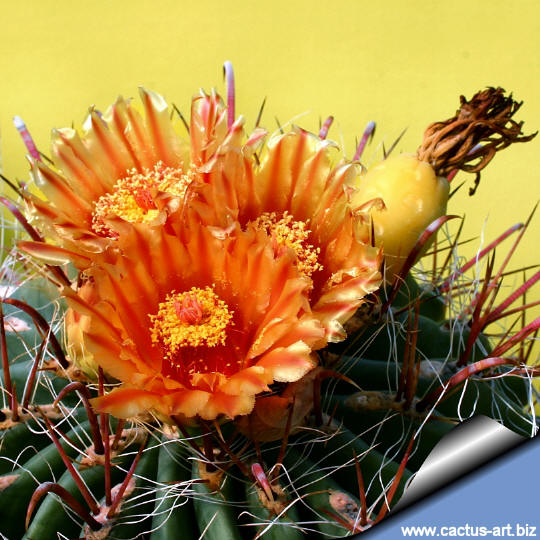
Cultivation:
Use very draining soil, water during the
aestival growth cycle (this plant need plenty of water) But needs to be
avoided wetting the bodies of these plants while they are in
sunlight. A wet cactus in the sun light can cause sun burning which can
lead to scares or even fungal infections and death.
Needs full sun. Keep dry at 10°C in winter, but can tolerate
sporadic light frost.
Reproduction:
Seeds are the only way of
reproducing.
Uses: The fruits of this plant are edible, and
in the past, the seeds have been used to make flour.
Native Americans have also used barrel cactus pulp for making jelly and
cactus candy.
|
|